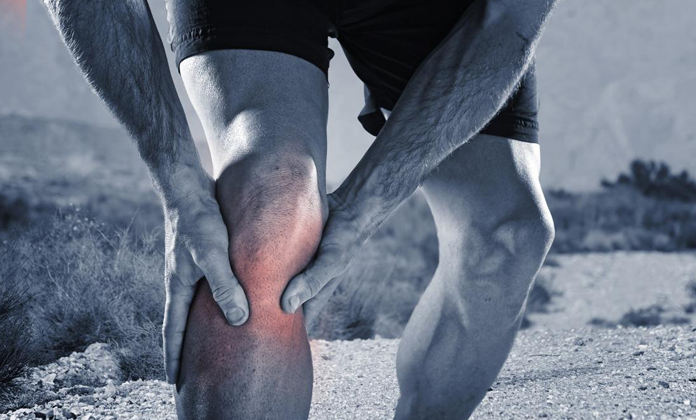Table of Contents
A joint injury is horrible. You have finally gotten into the swing of things at the gym and you are happy with the positive changes that you see on your body. The exercises seem to be getting easier and you beat your personal best almost every other day. All of a sudden, you feel a small pain on one of your joints. You work through it because you don’t want to lose your progress. The next time, the pain lasts for a few hours after the workout. Before you know it, the pain never goes away. You, my friend, have just sustained a joint injury.
A joint injury is more common than you think
If you talk to a few of the people at your gym, you will soon realize that almost everyone has had a major joint injury at least once along their workout journey. You would also be surprised to find out that a large portion of the people in your gym has one right now. Joint injuries are common. Thankfully, there are ways to deal with them so that you can get back to maximal training as soon as possible.
How to deal with a joint injury
Make sure that you aren’t training your joints too often
The biggest cause of joint injuries or joint pain is overuse. If you train a joint for too long, it will break down faster than what it can recover from. Bones take longer to heal than joints. Joints take longer to heal than muscles. Therefore, your joints need more recovery time than muscles. Just because you can do an exercise without muscle pain does not mean that your body is ready for it.
You will notice that the joints that are most likely to get injured are the ones that you use the most often. These include the shoulders, elbows, and knees. You might be working your quads in one exercise and your hamstrings in the other, but your knees are working hard during both of those exercises. Follow an exercise routine that gives plenty of rest for each joint.
2. Switch between different rep counts
Joints might take longer to recover than muscles. But that doesn’t mean that you can’t grow your muscles while waiting for your joints to recover. Low reps put the most pressure on joints. Higher reps are easier. This is because of the fact that the entire weight is supported by the joint. If your joints need a break and you want to continue forcing your muscles to greater growth, try swapping out your low reps for higher reps.
This will give your joints some much-needed recovery while increasing muscle growth. Every time you switch up your workout program, you stimulate your muscles to grow more because they need to adapt to a new stimulus. Switching between low-rep and high-rep programs will give you the best muscle growth result while allowing your joints sufficient recovery time.
3. Eat different nutrients to avoid joint injury
Your joints need nutrients to grow and recover, just like your muscles. Eat enough protein to support the muscles and tendons around the joint. Foods that contain vitamin C will encourage cartilage production. Gelatin is also an important food for your joints. You can find gelatin in jello, bone broth and supplements. There are vitamins on the market which are specifically made to help with joint recovery. Fish oil, one of my favorite supplements, will help to lubricate the joints and avoid injury.
4. Apply heat and cold to speed up joint healing
The heat will increase blood flow to an injured joint. The coldness will ease inflammation and swelling. By alternating between these two temperatures, you can speed up healing to a selected area. There are also many creams and ointments that will help to encourage healing by improving blood flow to a joint. These may include Arnica oil and vapor rubs.
5. Flexibility can help to prevent joint injury
A stiff joint is an accident-prone joint. Stretch regularly to help the joints move easily through a full range of motion during your exercises. This will help them to perform a physical task without bending past their limits. Remember to avoid static stretches before your workouts because they may encourage your joints to move past their maximum range of motion. Static stretching also relaxes muscle tissue and decreases its physical output.
Bonus Tip: Warm up before exercise to prepare the joints for the coming workload
Do some light cardio before your exercise routine to increase blood flow. This will increase nutrient delivery so that the joints can do more before tiring. You can also do warm-up sets before a particular exercise to prepare a certain joint. If you want to protect your knee joints before a major squat exercise, try doing a few sets of squats before with half the weight. This may increase your performance along with protecting against joint injury.
Additional notes
Sleep is also needed for optimal recovery. Another great way of ensuring your muscles and joints are against injury is to strengthen the opposing muscles. If your joint pain persists after an exercise, you need to stop that exercise in order to avoid injury. When dealing with pain of any sort, always consult your doctor immediately. Speak to a personal training düsseldorfand make sure that you are using the correct form before embarking on a new exercise routine. Exercise is meant to strengthen your body – not break it down.
Conclusion
By working out smarter, instead of harder, you can maximize muscle growth while avoiding injury. Always make sure to get enough rest between workouts. The wrong balance between work and rest will either decrease the amount of muscle that you grow in a period of time or lead you to injury. Many exercise-related injuries lead to surgery because of overuse or incorrect form.
Have you had a joint injury before? What did you do to correct it? What advice would you give to someone who was in your shoes a few years ago? I would love to hear from you in the comments!
You may also like:Maximize Your Muscle Recovery With Good Sleep







